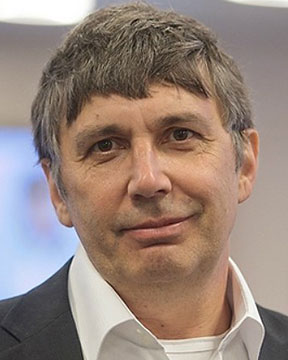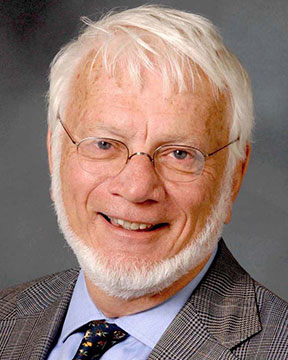



















The role of indicators in acid base titration is very vast, and the synthetic indicators used for this work at a large scale. A sustainable effort has been made to replace these synthetic indicators by natural indicators. Abelmoschus Esculentus flowers appear to have very good indicating properties in acid- base titration. Indicators are used to show the end point of reaction, and this end point mainly deals with change in color, disappearance of color and precipitate formation. Three different sets of titration, viz. strong acid vs strong base, weak acid vs strong base, strong acid, and weak base, have been tested. The result of titration viz. strong acid and strong base (10mL by natural indicator and 9mL by synthetic indicator), weak acid and strong base (9mL by natural indicator and 8.7mL by synthetic indicator), strong acid and weak base (2.5mL by natural indicator and 2.8mL by synthetic indicator) showed that the natural indicators are very much effective in this regard. These values are almost similar to that obtained from synthetic indicators. Results shown above concluded that natural indicators could be an excellent replacement for synthetic indicators since they are cheap, readily available, simple to extract, not toxic, and user and environmentally friendly.
Keywords: Analysis; Development; Environment; Sustainability;Off-site manufacturing (OSM) has been confirmed as an efficient production approach in the construction industry, benefiting the industry stakeholders in many ways, such as the improved sustainability and productivity [1]. A variety of stakeholders are involved into the development of an OSM project [2], and the successful project implementation requires a highly integrated level of collaboration among the stakeholders [3]. However, limited studies are available to explore this important issue. Therefore, this discussion paper aims to develop a novel multi-agent conceptual framework to facilitate the management of OSM stakeholders. An integrative review method was adopted to achieve the aim. The proposed framework will enrich the current understanding of stakeholder management in OSM projects and promote a new collaborative working platform in a large scale social environment. It also promotes the establishment of the theoretical foundation of collaborative planning in infrastructure projects.
Keywords: Development; Environment; Industry; Management; Technology;High accident risk was studied by analyzing the Chemical Accident Tracking System (CATS) in Korea. At the top of the accident analysis taxonomy hierarchy, are accidents in facilities due to worker carelessness, inadequate facility management, and transportation vehicle accidents. Chemical processes were classified according to its typical components, such as transportation facility, unloading facility, storage facility, transport facility, process facility, and emission treatment facility. Each facility was further analyzed to have typical components in the industry. As a result of chemical accident analysis, the number of leaks due to vehicle accidents in transportation facilities was the highest, and the next is due to the leakage of process facilities. The following are major consequences of chemical accidents in Korea: accident frequency, corrosion, fatigue cracks, and repair work. For further study, a new hierarchical method of accident taxonomy was suggested in order to prepare effective countermeasures on how to reduce or manage chemical accidents.
Keywords: Environment; Industry; Management; Stabilization;Off-site manufacturing (OSM) has proven to be an innovative and effective approach of addressing low productivity and sustainability issues in construction projects [1]. Supply chain management is an indispensable component of the OSM project management [2]. Nevertheless, issues have emerged in the supply chain management while using it in infrastructure projects due to their transient, fragmented, and complex nature as well as the large number of stakeholders involved [3]. The development of a collaborative supply chain has significant values in addressing the issues in the OSM supply chain management for infrastructure projects. However, limited explorations about this issue are available. Therefore, this discussion paper aims to develop transformative supply chain conceptual framework for improving the efficiency and effectiveness of OSM infrastructure projects. An integrative review method was adopted to achieve the aim. The proposed framework will improve the productivity and sustainability performance of the infrastructure sector through advancing supply chain management performance with other advanced technologies. It contributes to the creation of new knowledge of supply chain management in infrastructure engineering.
Keywords: Development; Environment; Industry; Information; Management; Production; Technology;Aromatics are among the most important resources for the chemical industry. Many materials are made from aromatics and lead to higher or better performance. Brand owners are on the search for more sustainable molecules (e.g. bio-based). But also the introduction of higher performance and safety issues can be seen as the most important driver for this development.
Currently virtually all aromatic building blocks are made from fossil oil. This presentation is anticipating the expected growing shortage of aromatics from the petrochemical industry and the widely shared ambition to green the chemical industry. On top of that one of the main drivers is to develop innovative molecules that are safer and more performing.
This lecture will give an overview of the problems linked to wood-based refineries and the availability of lignin sources. Next, it will give an overview of the different approaches worldwide to valorize lignin and to produce bio-based aromatic molecules. It will indicate the hurdles, challenges and needs for value chain approaches.
A nice example in integrated approach is the The Shared Research Center, Biorizon. Biorizon, an initiative of TNO, ECN, VITO and the Green Chemistry Campus, develops technologies to produce aromatics derived from plant-based (waste) streams. Biorizon brings together global leaders (large industry and SMEs) in the fields of feedstock, conversion, equipment, building blocks, materials and end-products. Biorizon aims to be a world leader in the development of biobased aromatics to provide the chemical megacluster around the Netherlands, Flanders (Belgium) and Nordrhein Westfalia (Germany) with innovative, sustainable building blocks leading to many different applications in the products marketed by brand owners and small companies. The objective is to make commercial production feasible for industrial partners by 2025 at the latest.
Biorizon utilizes plant-based streams such as wood or its fractions lignin and sugars to develop functionalized biobased aromatics for performance materials, chemicals & coatings.
Biorizon is based on the open innovation methodology, bringing together collective intelligence of various industries, companies and knowledge organizations. The multi-disciplined technological need, as well as the long term roadmaps based on thermochemical conversion, sugar chemistry for furanes and lignin depolymerisation-based chemicals for functionalized aromatics lead to a large network of applied research projects with more than 40 industrial partners, sharing research, intelligence, investments, risks and workload in different projects.
The Department of Mechanical Engineering is committed to excellence in education and research. The undergraduate program was created in 1948, and in 1964 the graduate program was launched. Since then, it has been rated as one of the best in the country. The graduate program is rated at the top four in the country, with the highest grade given by CAPES evaluation. It has a significant presence in the national and international scientific community, and a strong interaction with industry. Our students are encouraged to participate in interchange experiences, and in extra-curricular activities such as Scientific Initiation, the Baja and robotics teams. In general, the alumni are very well rated in the job market. In this presentation I will present some initiatives and perspectives in our department in the Brazilian context.
Keywords: Education; Engineering; Science; Technology;The chemical and food industries have been responsible for most of the growing global demand for raw materials around the world. In this framework, it should be highlighted that industrial sustainability may involve assessing trade-offs among multiple dynamic goals and striving for continual improvement, rather than achieving a specific state. In this sense, there is a clear need for knowledge on new sources of feedstock as a way of strengthening the global economy and meeting impending industrial demands worldwide [1,2]. Certainly, this scenario brings challenges that need to be overcome regarding processing industries and sustainable research. In this context, ongoing studies carried out by our Research Group at Federal University of Minas Gerais (DEQ/UFMG) in collaboration with international research have provided valuable data and procedures that not only covers thermal conversion processes and chemical kinetics but also physical-chemical properties of lignocellulosic-based materials (forestry waste, agricultural residues and agro-industrial waste) [3,4] contributing to the outcome of significant applications in the fields of Science and Technology as well as of Sustainable Industrial Processing. Results obtained are an environmentally friendly alternative relating to edible oils extraction and energy conversion technologies in connection to biorefining. The study has identified some of the main agricultural and forest residues demonstrating the importance of adding value to waste steam (activated coal; vegetable coal; animal feed; nutraceutical food; cosmetics) by the generation of co-products from the processing of alternative raw materials.
Keywords: Sustainability; Industrial Processing; Productive ChainOne of the most common copper concentrate smelting furnaces is flash smelting furnace, which smelts over half of the world's copper concentrates. The copper concentrate air or oxygen enriched air, and auxiliary fuel oil are charged into this furnace. Due to pyrolysis of copper concentrate, and the reaction of decomposed products with oxygen intake, a large amount of released heat causes the melting of copper concentrate. The copper concentrate contains various minerals, and each of them has various reactions with atmospheric oxygen in the furnace. Thus, each mineral generates a certain amount of dust. One of problems in flash furnace is dust generation, as dust is an environmental pollutant. In order to fix or improve the problem, it is necessary to recognize the proper actions at the time of feeding; within 12 months, inlet concentrates were mineralogically and chemically analyzed, and the effect of concentrate minerals on air and fuel consumption as well as the dust generation were studied. Subsequently, the most appropriate mineral in the concentrate which generates the least dust in the Khatoon Abad Flash Furnace is obtained.
Keywords: Environment; Metallurgical; Flash furnace; Copper concentrate smelter; Flash dust production; Furnace air consumption;One of the promising ways of cleaning quarry and industrial waste water from copper ions is the electrolysis method, using electrodes with a highly developed reaction surface. We have studied the process of electrolytic copper extraction from dilute solutions (<1g/l) using cathodes made of carbon fibrous materials of a new generation. As a result of the experiments, materials with the best indices were chosen for the extraction of copper from poor sulfide solutions. An electrochemical reactor with different forms of cathode blocks made from carbonaceous materials was designed and constructed: (1) with a rotating cathode; (2) with flowing volume-porous cathode block; (3) with flowing volume-porous cathode block and with an internal mechanical stirrer.
When using an electrolyzer with improved hydrodynamic regime and with a cathode block from carbonaceous fibrous material, high values of copper recovery were obtained (99-100%) from dilute solutions with a current output of 60-65%. It is established that the parameters of the copper recovery process are determined mainly from the type of carbonaceous material, the conditions of electrolysis, and the design of the electrolyzer. It was also taken into account that the nature of the carbonaceous material and the degree of its graphitization affect the overvoltages of hydrogen and oxygen release on the electrodes.
It is shown that it is possible to effectively use carbonaceous fibrous materials for electrolytic copper recovery from industrial and quarry wastewater.
Knowledge of key hydrological processes and the scale at which they are dominant is still a gap in understanding how mountain catchments function [1]. This is crucial for the sustainable management of water resources as mountain areas are regarded as water towers where the bulk of fresh water is generated [2]. The general effects of land cover types on hydrological processes are known, but estimation of the specific effects in a given catchment is still problematic [3]. This study is examining how herbaceous wetlands dominated by palmiet plants (Prionium serratum) and stands of invasive woody plants (Acacia mearnsii) affect flow paths as well as surface and ground water levels in valley bottoms within a catchment context. An assessment of the appropriate level of complexity required for the prediction of vegetation impacts on hydrological processes is also undertaken.
The Kromme and Baviaanskloof River catchments in the Eastern Cape Province of South Africa were used as case study sites because of their unique nature (narrow valleys with relatively flat valley bottoms) and regional importance for water supply. Through physical characterization, the nature of the groundwater-surface water interactions is being determined and how the valley bottoms are linked to their adjacent steep hillslopes. Data being collected include rainfall, groundwater levels, soil moisture and stream flow. Two models (MIKE SHE and FLEXI Topo) are used for prediction. Preliminary conceptualization of the catchment's hydrology shows that it is highly responsive to rainfall of high intensities, which are attributed to changes in land cover types; stream flow duration is also prolonged even in small tributaries, and this could be due to groundwater discharge from the fractured bedrock aquifer. The project forms part of a larger research study on participatory hydrological modelling, which involves stakeholder engagement in the selection of options being considered in the modeling process for sustainable water management.
There is widespread concern about the safety of shellfish, which are harvested from quite shallow locations along the Mediterranean coast of Egypt. Investigation of some microbiological properties of the collected bivalves and their water beds, and surface and bottom areas, were done during four seasonal sampling cruises from March, 2016 to February, 2017 at eleven stations. All samples were analyzed for the total plate count, fecal pollution indicators, bacteria (total coliforms, E.coli, and fecal streptococci), and the prevalence of three emerging food-borne pathogens, including Listeria monocytogenes, Campylobacter, and E.coli 0157:H7. In addition, some environmental parameters of the coastal water samples, including temperature, salinity, dissolved oxygen, and pH were also measured. Sampling techniques were done according to IOS standers, and the membrane filtration technique was applied using the total plate count agar and the respective selective media. Identification using the biochemical tests was done and the final counts were calculated as cfu/100ml/gm water/meat. Fecal pollution bacterial counts ranged from <1 to 104 of all the detected microorganisms, depending on the investigated area and dates of sampling. The incidence of Listeria monocytogenes in the examined water samples varied widely from 0 to 15%. Campylobacter was found in percentages of 2 to 20%. E.coli 0157:H7 was detected in 3 to 25% of the investigated locations. There was an association between the fecal contamination indicators and the presence of the studied pathogens. The same trend was observed in the oyster meat samples. These results may help to develop sanitary strategy/strategies for better Mollusca shellfish safety.
Keywords: Environment; EscherichiaColi; Health;The availability of fresh and good quality drinking water has become one of the major problems of the contemporary era. So, there are increasing apprehensions in the world for occupation of good quality water reservoirs. The exploitation of natural resources and rapid industrialization are directly or indirectly related to the dearth of fresh and good quality drinking water in the world. All kinds of industries release their waste products directly into the environment, making it polluted and unhealthy for human beings. Leather industries also appear to pollute the soil and water bodies with their discharged toxic wastes [1]. These are responsible for uncontrolled contamination of water by their lethal discharge comprised of metals and other substances that is proving poisonous for all kinds of living organisms on the earth [2]. The progress in technological development is assumed to bring prosperity in every sphere of life, but unfortunately some bitter fruits are also being cultivated by them in the form of deteriorating ecosystems. When crops are being irrigated by metal-based polluted water, it not only seems to impede on their proper growth and development, but also yields nutritionally deficient products [3].
Atomic absorption spectrophotometer technique was employed to measure the contents of the heavy metals in the effluents directly released from tannery industries. These effluent samples were first subjected through wet acid digestion process for decomposition of organic substances and concentration of the metals being measured in the samples. The measured concentration of the heavy transition metals by AAS technique was analyzed, and it was concluded that this spectrophotometer method can analyze remarkable concentration of the effluents metals. Therefore, the quantitative measurement of most of the metals in tannery waste is preferable by AAS method. These results overall give a picture that the environment is being greatly contaminated due to high Cr, Fe, Pb concentrations, as well as other toxic chemicals found in the discharged effluents from tanneries.
BAZH NGO identified the innovations for Human Development in Albania by preparing the 1ST Albanian Catalogue of Innovations for Human Development (ACIHD) in collaboration with UNDP/IDEASS (innovation for development and south-south cooperation. ACIHD aims to improve the integrated territorial development processes by increasing the use of local innovations. ACIHD can be updated and enriched with other contributions in order to implement a permanent service for human development innovation. The main aim of ACIHD is to identify, illustrate, and transfer the innovations to Albanian territorial development actors abroad, promoting their use with technical assistance activities. ACIHD is an important tool to enhance Albanian development actors and their ideas. ACIHD is a novel instrument for creating a network for transferring the know-how on innovative technologies and methodologies to local actors interested in solutions to territorial problems. ACIHD was developed with the cooperation of 170 actors, establishing contacts and collaborations with Albanian National Institutions and Ministries, as well as Academic partnerships with Albanian University, research centres, and civil society associations for the systematisation of creative practices of local actors, bringing innovative solutions to common problems. In its original form, ACIHD involved 13 innovations successfully performed by Albanian authors in the fields of agriculture [1-6], breeding [7], local development [8-10], environmental technologies [11-12], and health care [13]. The identified innovations were elaborated scientifically in their final form with the support of BAZH International Scientific Consultant (ISC) by the participative methodology and collaborating with the Albanian Agency for Research & Technology Innovation centre that funded the Catalogue in its integrated form. ACIHD presents also the catalogue of sector studies (CSS) regarding the fields of agriculture [14-16] and green technology [17-18]. Other experiences are born in continuity with the Catalogue project to develop a smart networking system for monitoring and fostering research and innovation capacity in SMEs across Adriatic Region (AULEDA). The methodology developed in ACIHD for identifying, presenting, and valorising Albanian innovations was officially recognized as Best Practices by Feeding Knowledge (Sustainable management of natural resources in 2015.
Keywords: Agriculture; Development; Environment; Health; Management; Policy; Production; Social; Soil; Sustainability; Technology;The skin is frequently exposed to environmental phenomena that pose high risks for its health, the integrity of its epidermal barrier, and its functionality. One of the main environmental issues for skin is the UV radiation from sunlight that causes erythema. The erythema causes a dilatation of blood vessels with alteration of interleukin 1 levels released by damaged keratinocites of skin. Long term exposures of skin during sunlight hours may cause melanoma and other kinds of cancers. The degree of UV absorption depends from many factors such as UV index, pigments, thickness and hydration, which are also factors in the skin's defense from external injuries. The evaluation of skin hydration become fundamental for the evaluation of the health state of skin, its selective permeability, and functionality. Our work is focused on the application of TVS skin test as a non-invasive tensiometric tool for hydration and surface free energy evaluation of in vivo skin. A new investigation on the influence of blood donation on hydration of skin measured by contact angle method is also reported with the aim to demonstrate the correlations between clinical and tensiometric data. Our approach demonstrated, in a non-invasive way, the possibility to determine the health state of skin in large scale and its functional efficacy. This approach also evaluating simultaneously its surface energy polar component, the water content linked to its polar component, the hydration state, and the capacity of skin to recover its functionality after treatment with a biomimetic activator and after the blood donation of a volunteer panel.
Keywords: Health; Technology;Skin hydration; Contact angle; Biomimetic activation; TVS skin test; Surface energy polar component; UVB Index;